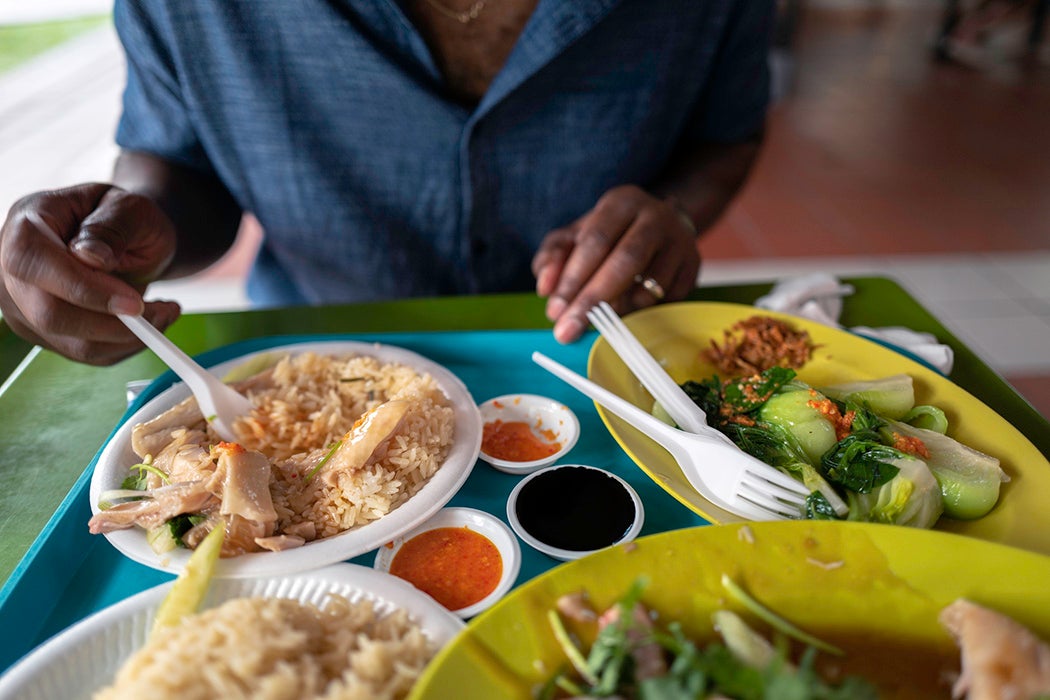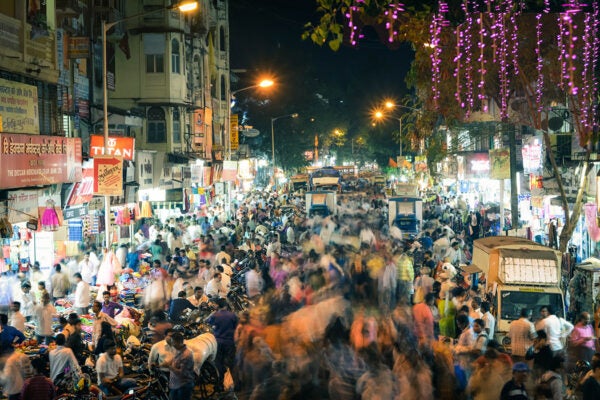Singapore hawker culture has made it to a global list of intangible cultural heritage, with the government’s bid for official recognition accepted by UNESCO in 2020. That’s quite the feat for an institution that has existed only about five decades in its present form. But the campaign to put Singapore’s hawker centers on the world map was an unsurprising goal. After all, “[h]awker food reveals the aspirations and anxieties of this unique cosmopolitan, multicultural city-state,” says Andrew Tam. Notably, Singapore’s promotion of hawker culture hinged on street food’s role in “community dining and culinary practices in a multicultural urban context.”
That tagline underscores how the hawker center reflects the values around city spaces and racial diversity that the Singaporean state has cultivated over the years. As Tam puts it, “Hawker food in Singapore is a trope for multiculturalism and a tool for nation building, yet a demarcating line for racial inclusion and exclusion.”
Singapore’s hawker food began in the streets of the nineteenth and twentieth centuries, as a way to feed the tens of thousands of migrants seeking work in colonial ports, plantations, and mines. Itinerant hawkers met the demand for cheap, fast food: dishes that mostly comprised rice or noodles, “with a modest portion of meat and vegetables accompanying” the carbohydrates.
“The food would often be consumed on the go, although some hawkers provided seating in the form of makeshift wooden tables and chairs,” explains Tam.
The number of hawkers swelled to as many as 26,000, especially during tough economic times when immigrants “were drawn to the profession for its low startup cost and lack of prerequisites.” But the crowds and the mess vexed the authorities. After independence in 1965, the postcolonial government hit on a new solution: It issued 18,000 hawker licenses and banned all other vendors.
From the 1970s, hawkers were taken off the streets. They moved into purpose-built facilities—state-owned hawker centers or smaller, private kopitiams [coffee shops]—in residential estates and commercial areas.
“Domesticated in a centralized space, hawkers were much easier to regulate,” writes Tam, pointing to the introduction of hygiene grades for licensed cooked food vendors. “The issues that irked the government—uncleanliness and overcrowding—were thus resolved by the hawker center.”
Beloved dishes changed with their new surroundings. For example, chicken rice originated in the 1920s as balls wrapped in banana leaves. Now, “[c]hicken rice balls effectively disappeared, since plates replaced the banana leaves in the hawker center,” Tam recounts. In other cases, “hawkers were forced out of business, their specialty dishes disappearing from the public scene.” Yet Singaporeans increasingly saw hawker food as an authentic icon of their heritage.
“From squalid food vendors that needed ‘cleaning up,’ hawkers would be repackaged by the government as guardians of a cornerstone of Singapore heritage,” Tam writes, adding that the state “adapted to its citizenry’s obsession with food to co-opt it in the making of a national identity.”
Tam points out that hawker centers were developed at the same time as Singapore’s ubiquitous public housing estates, which use racial quotas to prevent the formation of communal enclaves. In this way, they play a role as a social safeguard for the constitutional promise of multiracialism.
Besides enabling the regulation of hawkers, the center could also “serve as a public social space to facilitate racial integration,” writes Tam. “The hawker center can thus be seen as one of the many sites deliberately constructed to reverse racial segregation.”
Still, there are limits to hawker center multiculturalism—which, like other aspects of public life, relies on a model with four racial categories: Chinese, Malay, Indian, or “Others” (CMIO).
“For people who do not fit neatly inside the CMIO rubric, the barriers to entry are not physical or economic but cultural,” Tam explains—such as the many migrants from India and Bangladesh working in construction, or domestic workers from Indonesia, the Philippines, and Myanmar. He observes that “the representation of Filipino and Bangladeshi food is virtually nonexistent in hawker centers,” partly because certain kinds of work permits bar them from the hawker trade.
Weekly Newsletter
“Hawker centers primarily cater to the local, predominantly Chinese, Malay, and Indian population. The invisibility of such cuisines in hawker centers, purportedly representative of Singapore’s racial inclusivity, attests to the barriers of integration for foreign workers,” adds Tam. That’s a far cry from the historical origins of the Singaporean hawker, since “[t]he itinerant hawker of the early twentieth century was almost invariably an immigrant.”
Yet—despite their relatively recent introduction by the state—hawker centers have become “sites of nation building, regulated by national agencies” that the Singaporean public claims as its own.
“In a rapidly changing metropolis, where the cityscape is constantly evolving, hawker food maintains a much-cherished link to a cuisine purportedly stable through time,” writes Tam. “Although this resistance to change is largely illusory, hawker food remains hugely successful in allaying the anxieties of nostalgia in a fast changing metropolis.”







